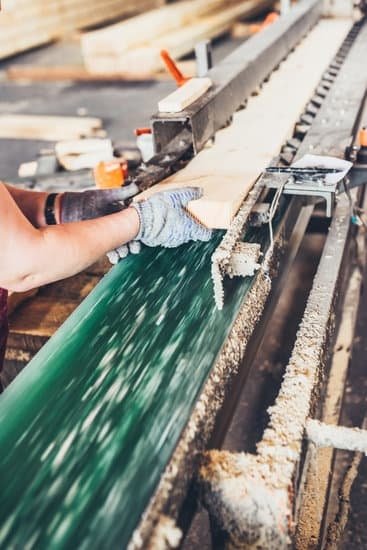Shaker style woodworking is a timeless craft that has been passed down through generations. This article aims to provide an in-depth look at the history, characteristics, tools, techniques, and modern-day influence of Shaker style woodworking. By the end of this article, you will have a comprehensive understanding of what Shaker style woodworking entails and how you can incorporate it into your own projects.
The Shakers were a religious sect known for their simple and functional approach to design and furniture making. Their woodworking style is characterized by clean lines, minimalist designs, and high-quality craftsmanship. This introductory section will give you a glimpse into the world of Shaker style woodworking as we delve deeper into its history and key elements.
In the following sections, we will explore the origins and evolution of Shaker style woodworking, the tools and materials commonly used in this craft, the techniques and methods employed by Shaker woodworkers, as well as examples of notable Shaker style woodworking projects. Whether you are a seasoned woodworker or just starting out, this article will provide valuable insights into embracing the timeless tradition of Shaker style woodworking.
History of Shaker Style Woodworking
The history of Shaker style woodworking dates back to the late 1700s when the Shakers, a religious sect known for their simple and functional approach to design, began creating furniture and household items. The Shakers believed in creating items that were both beautiful and practical, which is reflected in their woodworking style. This approach to craftsmanship has stood the test of time and continues to inspire woodworkers today.
The Origins of Shaker Style Woodworking
Shaker style woodworking originated in the communities established by the Shakers in areas such as New England, Kentucky, and Ohio. The furniture and household items produced by the Shakers were known for their clean lines, minimalist design, and attention to detail. Their work was often characterized by its functionality and durability, as they believed in creating items that served a purpose and would last for generations.
Legacy of Shaker Style Woodworking
The legacy of Shaker style woodworking can be seen in the numerous examples of furniture and household items that have been preserved from this time period. Pieces such as Shaker chairs, tables, cabinets, and boxes are still highly sought after for their timeless design and craftsmanship. The influence of Shaker style woodworking can also be seen in modern furniture design, with many contemporary pieces drawing inspiration from the simplicity and elegance of Shaker craftsmanship.
Preservation of Traditions
Today, there are dedicated woodworkers who continue to practice traditional Shaker style woodworking techniques, preserving the craft for future generations. By embracing the history of Shaker style woodworking, enthusiasts can learn valuable lessons in craftsmanship, design aesthetics, and dedication to creating pieces that stand the test of time. As a result, this ensures that the legacy of Shaker style woodworking lives on for years to come.
Characteristics of Shaker Style Woodworking
Shaker style woodworking is a traditional woodworking style that originated from the Shaker communities in the 18th century. This style is known for its simplicity, functionality, and craftsmanship, making it a popular choice for furniture and home decor. Some key characteristics of Shaker style woodworking include:
- Minimalism: Shaker furniture and woodwork are known for their minimalist design and clean lines. The focus is on practicality and function rather than ornate decoration.
- Quality Craftsmanship: Shaker woodworkers are renowned for their meticulous attention to detail and high-quality craftsmanship. Every piece is carefully constructed with precision joinery and durable materials.
- Use of Solid Wood: Authentic Shaker furniture is primarily made from solid wood, such as cherry, maple, or pine. The natural beauty of the wood is often showcased through simple finishes like oil or wax.
- Practical Design: Shaker furniture is designed to be practical and efficient, with functional features such as built-in storage compartments, adjustable shelves, and sturdy construction.
- Timeless Appeal: Despite its simplicity, Shaker style woodworking has a timeless appeal that continues to resonate with modern-day homeowners and designers.
Incorporating these key characteristics into your own woodworking projects can help you achieve the distinctive look and feel of Shaker style craftsmanship. Whether you’re building a classic dining table, a set of chairs, or even smaller decorative items like boxes or shelves, embracing the essence of Shaker style will add an air of timeless elegance to your creations.
Tools and Materials Used in Shaker Style Woodworking
Traditional Tools Used in Shaker Style Woodworking
Shaker style woodworking is known for its simplicity and functionality, which is reflected in the tools used by Shaker craftsmen. Traditional hand tools such as chisels, hand planes, drawknives, and spoke shaves were commonly used to create clean lines and precise joinery in Shaker furniture. The emphasis on handcrafted precision and attention to detail can still be seen in modern adaptations of Shaker style woodworking.
Materials Used in Shaker Style Woodworking
The Shakers were known for their use of high-quality, locally-sourced hardwoods such as maple, cherry, and walnut. These woods were prized for their durability and natural beauty, making them ideal for creating timeless pieces of furniture. Additionally, the Shakers often favored simple finishes such as linseed oil or milk paint to accentuate the natural grain of the wood.
Modern Tools and Materials in Shaker Style Woodworking
In today’s contemporary woodworking shops, power tools such as table saws, routers, and power sanders are commonly used alongside traditional hand tools to expedite the process while still maintaining the essence of Shaker style craftsmanship. While traditional hardwoods are still widely utilized, modern woodworkers may also incorporate other sustainable materials such as reclaimed wood or eco-friendly finishes to align with current environmental standards.
As a result, the timeless beauty and functionality of Shaker style woodworking continues to thrive in the modern era.
Techniques and Methods of Shaker Style Woodworking
Shaker style woodworking is a distinctive type of woodworking that originated with the Shakers, a religious sect that settled in the United States during the 18th century. The key to achieving authentic Shaker style lies in the simplicity and functionality of the design. This type of woodworking is known for its clean lines, minimal ornamentation, and focus on practicality.
One of the most common techniques used in Shaker style woodworking is the use of hand tools. Traditional Shaker woodworkers would have used hand saws, chisels, planes, and scrapers to create their furniture and other wooden items. This method not only honored their commitment to simplicity but also allowed for a high level of precision in their work.
Another important aspect of Shaker style woodworking is joinery. The joinery techniques utilized by Shaker woodworkers were both durable and visually appealing. Mortise and tenon joints were commonly used to connect pieces of wood together, ensuring strength and stability in their creations.
In addition to traditional hand tools and joinery techniques, Shaker style woodworking often incorporates specific methods for finishing wood surfaces. Typically, Shaker furniture was finished with natural substances such as linseed oil or shellac to enhance the natural beauty of the wood while protecting it from wear and tear.
| Shaker Style Woodworking Techniques | Key Features |
|---|---|
| Hand Tools | Utilization of traditional hand saws, chisels, planes, and scrapers for precise work |
| Joinery | Emphasis on durable and visually appealing mortise and tenon joints |
| Finishing | Use of natural substances like linseed oil or shellac for protection and enhancement of wood surfaces |
Examples of Shaker Style Woodworking Projects
Shaker style woodworking encompasses a wide range of projects, from simple and functional furniture to intricate and decorative pieces. One of the most common examples of Shaker style woodworking projects is the Shaker chair. This iconic piece of furniture features clean lines, sturdy construction, and minimal ornamentation, reflecting the Shaker philosophy of simplicity and functionality. Another popular example is the Shaker cabinet, known for its flat-panel doors, tapered legs, and durable hardwood construction.
Aside from furniture, Shaker style woodworking also includes smaller projects such as boxes, trays, and other decorative items. These projects often showcase the distinctive features of Shaker design, such as dovetail joinery, wooden pegs, and natural wood finishes. In addition to their timeless aesthetic appeal, these projects are also celebrated for their practicality and durability – hallmarks of the Shaker tradition.
It’s important to note that while traditional Shaker style woodworking projects serve as inspiration for modern woodworkers, contemporary craftsmen often put their own spin on classic designs. Whether it’s integrating modern materials or incorporating innovative techniques, today’s woodworking enthusiasts continue to find ways to honor and evolve the legacy of Shaker style woodworking.
| Shaker Style Woodworking Project | Description |
|---|---|
| Shaker Chair | An iconic piece featuring clean lines and sturdy construction. |
| Shaker Cabinet | Known for flat-panel doors, tapered legs, and durable hardwood construction. |
| Decorative Boxes | Showcasing distinctive features like dovetail joinery and wooden pegs. |
Modern Day Influence and Popularity of Shaker Style Woodworking
Shaker style woodworking has experienced a resurgence in popularity in modern times, with many woodworkers and enthusiasts embracing the timeless craft. The simple and elegant designs of Shaker furniture and woodworking have captured the attention of people looking for minimalist and functional pieces for their homes. This section will explore the modern-day influence and popularity of Shaker style woodworking, including its impact on interior design, furniture production, and DIY projects.
One of the reasons for the continued influence of Shaker style woodworking is its versatility and adaptability to various interior design styles. The clean lines, fine craftsmanship, and emphasis on functionality make Shaker furniture and woodworking pieces suitable for both traditional and contemporary spaces. From wooden chairs and tables to cabinets and shelves, Shaker style pieces complement a wide range of home decor styles, making them a popular choice for interior designers and homeowners alike.
Moreover, the rise of the do-it-yourself (DIY) culture has further contributed to the popularity of Shaker style woodworking. With an abundance of online tutorials, woodworking classes, and accessible tools and materials, enthusiasts are able to create their own Shaker-inspired pieces with relative ease.
This has led to a growing community of makers who appreciate the simplicity and timelessness of Shaker style woodworking. Additionally, the focus on sustainability in furniture production has also played a role in the increased interest in Shaker style woodworking, as these traditional techniques often prioritize using locally-sourced materials and emphasizing durability.
Furthermore, the influence of Shaker style woodworking can be seen in commercial furniture production as well. Many companies incorporate elements of Shaker design into their collections, recognizing that consumers are drawn to the classic aesthetic and quality craftsmanship associated with this particular style.
As such, it is evident that Shaker style woodworking continues to have a profound impact on both DIY enthusiasts as well as commercial furniture manufacturers seeking to cater to a market that values simplicity, functionality, and timeless design.
Tips for Getting Started With Shaker Style Woodworking
If you are new to woodworking or looking to start creating projects in the Shaker style, there are several tips that can help you get started on the right foot. Shaker style woodworking is known for its simplicity, functionality, and clean lines, making it a popular choice for both traditional and modern woodworkers. Whether you are interested in building furniture, cabinets, or small functional items, understanding the principles of Shaker style woodworking can guide you in creating timeless pieces.
One important tip for getting started with Shaker style woodworking is to familiarize yourself with the design principles and characteristics of this style. The Shakers were known for their minimalist approach to design, focusing on practicality rather than ornate decoration. Understanding the key elements such as straight lines, tapered legs, and wooden knobs will help you achieve an authentic Shaker look in your projects.
Another tip for beginners is to invest in quality hand tools and materials. Since the Shakers were known for their craftsmanship and attention to detail, using high-quality tools and materials is essential for achieving a professional result. Hand planes, chisels, and saws are commonly used in Shaker style woodworking, so having these basic tools in good condition is important.
Lastly, it’s helpful to study examples of traditional Shaker furniture and household items. By examining historical pieces and understanding the construction techniques used by the Shakers, you can gain insight into how to approach your own projects. Pay attention to joinery methods, wood selection, and finishing techniques to ensure that your work stays true to the spirit of Shaker style woodworking.
Conclusion
In conclusion, Shaker style woodworking is a timeless craft that has stood the test of time due to its simplicity, functionality, and elegant design. The history of Shaker style woodworking dates back to the 18th century and continues to influence modern-day furniture and decor. This minimalist approach to woodworking has proven to be enduring, making it a popular choice for those who appreciate clean lines, quality craftsmanship, and practicality.
The characteristics of Shaker style woodworking emphasize clean, unadorned surfaces and straight lines. This style prioritizes function over form, allowing the beauty of the natural wood and the skill of the craftsman to shine through. Additionally, the tools and materials used in Shaker style woodworking are simple and accessible, allowing beginners to embrace this craft with ease.
Aspiring woodworkers looking to delve into Shaker style woodworking can start by familiarizing themselves with the techniques and methods involved in creating classic Shaker pieces. Through practice and dedication, they can develop their skills and create beautiful projects that showcase the timeless appeal of this traditional woodworking style.
Whether it’s building a classic Shaker-style table or crafting minimalist cabinets, embracing the craft of Shaker style woodworking allows artisans to appreciate the beauty in simplicity while honing their woodworking skills for generations to come.
Frequently Asked Questions
What Defines Shaker-Style?
Shaker-style is defined by its minimalist and functional design, characterized by clean lines, simple construction, and emphasis on craftsmanship. It embodies the principle of “form follows function” and avoids unnecessary ornamentation.
What Kind of Wood Is Shaker?
The wood typically used in Shaker furniture is cherry, maple, or pine. These woods are chosen for their durability, beauty, and ability to showcase the natural grain patterns that are a hallmark of Shaker design.
What Is the Difference Between Shaker and Mission Style?
The main difference between Shaker and Mission style lies in their origin and influences. Shaker furniture was developed by a religious community in New England, focusing on simplicity and functionality. In contrast, Mission style originated in the American Southwest and was influenced by Spanish colonial architecture with its heavy, solid look and decorative elements like metal accents.

Hi everyone! I’m a woodworker and blogger, and this is my woodworking blog. In my blog, I share tips and tricks for woodworkers of all skill levels, as well as project ideas that you can try yourself.





